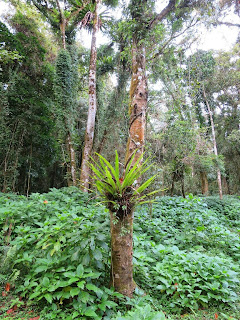









Since coming here, we have learned a great deal about Madagascar's involvement during WWII. Apparently, in 1942, British troops invaded Antisiranana, then known as Diego Suarez. At that time Diego was controlled by the French, who were in turn occupied by Nazi Germany. So, during the Battle of Madagascar, in May of 1942, the British forces attacked and conquered the town and port of Diego Suarez. They were especially worried about Japanese troops taking over the island, as during that time the Japanese had the longest range submarines and could have disrupted important trade and communication routes.
Currently, there are two war cemeteries in the downtown Antisiranana area, one for the British soldiers and one for the French, though there are French cemeteries all over northern Madagascar.
The first cemetery we went to see was the British one, maintained by the Commonwealth War Graves Commission (more on them in a bit). There is a small memorial area and plaque informing visitors about the Battle of Madagascar and the cemetery. Caryl and I signed their guest book - it looks like no one had visited in a few months. I will write out the part from the plaque about the buried soldiers, because I found it very interesting: "Diego Suarez War Cemetery. The graves of the casualties of the campaign, and of the garrison in its aftermath, were gathered into this cemetery. They number 315 (Navy 9, Army 290, Air Force 15, Merchant Navy 1) and by Forces comprise 166 British, 1 Australian, 10 South African, 132 East African, 5 Mauritian and 1 Belgian. The soldiers whose graves are unknown are commemorated on the East Africa Memorial in Nairobi War Cemetery, Kenya; sailors on memorials at their home ports; and airmen on the Airmen memorial in Egypt."
I also read a bit about the Commonwealth War Graves Commission; I had never heard of this. Apparently the Commission is made up of 6 member states: United Kingdom, Canada, Australia, New Zealand, India and South Africa. From Wikipedia: "The Commission, as part of its mandate, is responsible for commemorating all Commonwealth war dead individually and equally. To this end, the war dead are commemorated by name on a headstone, at an identified site of a burial, or on a memorial. War dead are commemorated uniformly and equally, irrespective of military or civil rank, race or creed. The Commission is currently responsible for the continued commemoration of 1.7 million deceased Commonwealth military service members in 153 countries."
The experience of walking through this immaculately manicured plot of land, maintained by 6 countries, looking at the names of the fallen soldiers, was surreal. Reading their ages - most under 25, fathers, husbands, sons. There were 3 gardeners on duty. Just outside the cemetery gates young children, maybe 9 or 10, were playing, chasing each other around on the dirt road amongst rubbish and discarded plastic bags. Leaving the cemetery I wondered if I were one of those soldiers, if that is how I would want to be remembered. While the cemetery looks beautiful, few visit it, and it feels like such a waste of resources in a country so in need. While I know this could never happen, I wonder if turning the cemetery into a proper playground for the kids wouldn't be a better use of the Commission's resources? While maybe a bit morbid, couldn't we have a Memorial park and garden for the future generation? Commemorate the dead, but also focus on the living? Or maybe not have wars in the first place, and save our energy for the many problems we need to work on that don't include race or religion? Just a thought.
The French cemetery is right next to the local cemetery, and is very different. For example, goats and zebu graze amongst the graves, unaware and blissfully ignorant of the symbolism of the stones they pee on (seriously, I watched a goat pee on a French grave).





















































